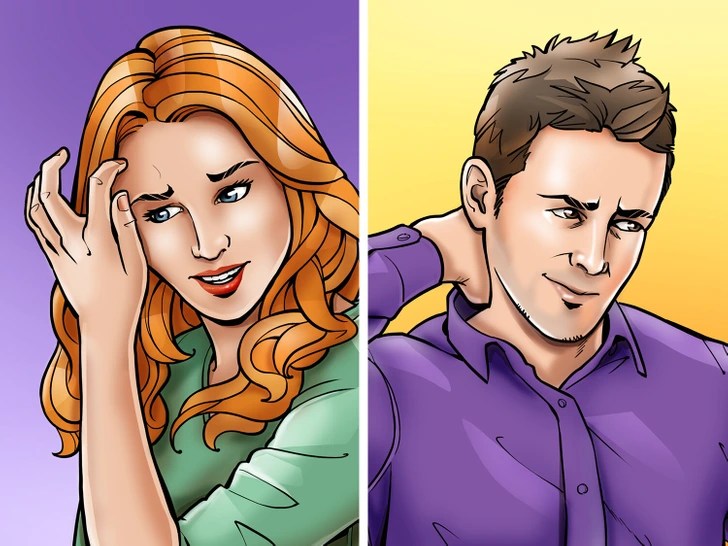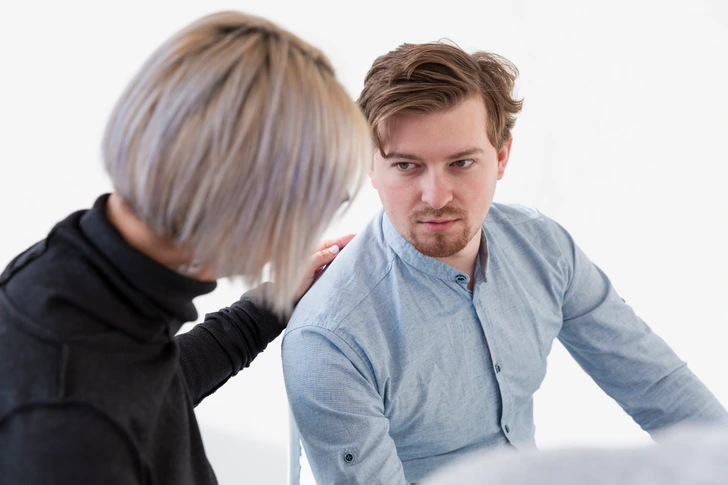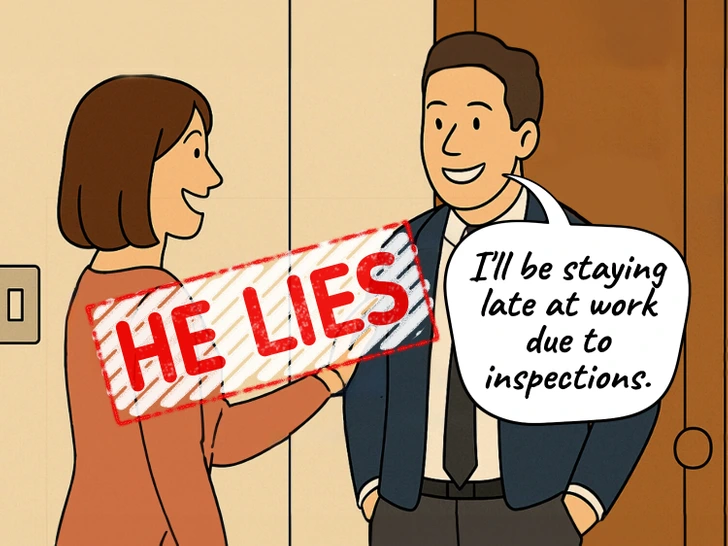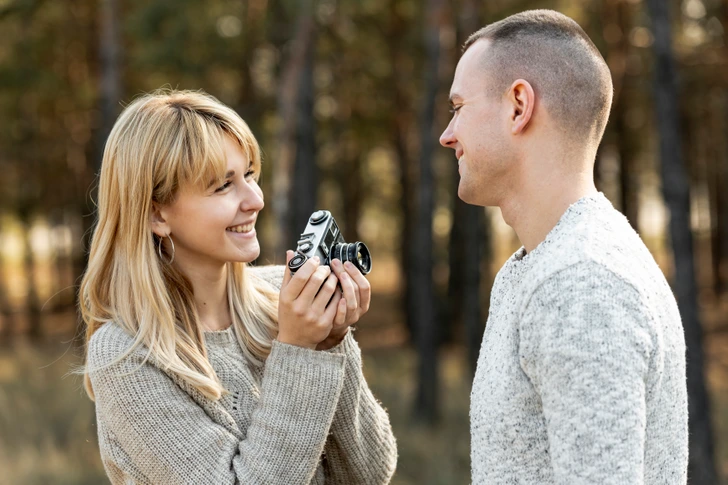Have you ever had a gut feeling that someone wasn’t telling the whole truth? Or maybe you felt a connection with someone just from a glance? That’s not magic. That’s body language doing its thing.
Our gestures, posture, and expressions often say more than our words ever could. Whether it’s a subtle head tilt or the way someone tugs at their ear, these nonverbal cues act like tiny truth bombs—and learning how to read them can seriously level up your communication game.
Let’s break down nine body language signs that can tell you exactly what someone’s feeling, even when they’re not saying a word.
Hair Twisting and Neck Rubbing: Anxiety in Disguise

Let’s start with a classic—twirling hair. In romantic comedies, it’s portrayed as a flirty move. But in real life? Not always.
Hair twisting or rubbing the neck can actually signal anxiety or discomfort. People often do it without realizing—especially when they’re feeling awkward, stressed, or unsure. It’s a self-soothing gesture, kind of like a grown-up version of hugging a teddy bear. Neck rubbing, in particular, stimulates the vagus nerve, which helps calm the body down. So next time someone does this during a tense convo, know it might be their nerves doing the talking.
Video: How to Read Eyes – How to Read Body Language
Smiling: Not All Grins Are Created Equal

A smile can light up a room—or throw you off completely. The key is spotting whether it’s real or just for show.
A genuine smile, also known as a Duchenne smile, involves both the mouth and the eyes. You’ll see the corners of the mouth rise and little crow’s feet forming near the eyes. That’s the good stuff—the kind of smile that says, I’m truly happy to see you.
On the flip side, a fake smile usually stops at the mouth. No eye crinkles, no warmth. Just teeth. And if their words don’t match their expression? Trust the face over the phrase.
Tilting the Head: The “I’m Listening” Signal

Ever notice someone tilt their head while you’re talking? That’s not random—it’s a nonverbal cue that screams attentiveness.
A slight head tilt usually means someone is fully engaged. They’re processing, absorbing, and trying to understand what you’re saying. It’s like their body is leaning into the conversation. In psychology, this is often seen as a sign of openness and empathy.
So if someone’s got their head tilted and eyes locked, they’re not just hearing you—they’re feeling you.
Hands in Pockets: Guard Up

If someone has their hands tucked in their pockets while talking to you, don’t ignore it. This gesture often hints at nervousness, disinterest, or even insecurity.
It’s a way of hiding, both physically and emotionally. In a social setting, it can suggest the person is holding something back or not fully comfortable. Open hands mean open conversation. Hidden hands? Not so much.
Ear Tugging: The Internal Tug-of-War

This one might surprise you. Tugging at the ear isn’t just a quirky habit—it can be a sign of inner conflict.
When someone’s unsure, especially during decision-making, they might start pulling on their earlobe or touching their ear. It’s their body’s way of saying, I’m stuck between options here. If they do it during a conversation, they might be hesitating to tell you something or struggling with what they just heard.
Mirroring: The Hidden Compliment

You know that moment when someone leans in right after you do? Or takes a sip of their drink right after you? That’s mirroring—and it’s a powerful indicator of connection.
When we subconsciously mimic someone’s posture, gestures, or facial expressions, it’s usually because we like them or want to build rapport. It’s called the chameleon effect, and it plays a big role in how trust is built between people.
So, if you’re trying to connect with someone new, try subtly mirroring their energy. Chances are, they’ll start warming up to you—without even realizing why.
Handshake Strength: More Than Just a Greeting

A handshake says a lot before you even open your mouth. Firm handshakes typically signal confidence, openness, and assertiveness. But here’s the twist—this varies by gender and personality.
In studies, extroverted men tend to shake hands firmly. But surprisingly, open-minded men often have slightly softer handshakes. Among women, a strong handshake is associated with intelligence and confidence.
Bottom line? Whether you’re sealing a deal or meeting your partner’s parents, that first grip matters more than you think.
Laughing Together: Building Instant Bonds
Video: How to Read ANYONE Instantly
Laughter is the glue of social connection. Even a silly joke becomes meaningful when it’s shared.
When two people laugh together—even if the joke wasn’t that funny—it signals a shared perspective and emotional alignment. Psychologist Sara Algoe calls laughter a universal way of building trust. It bridges gaps, lowers defenses, and boosts the sense of “we’re in this together.”
So the next time someone laughs at your bad pun? Don’t dismiss it. That might just be the moment your connection deepens.
Eye Contact: The Window to the Truth

You’ve heard it before—eyes don’t lie. And it’s true.
Maintaining eye contact signals confidence, interest, and honesty. But too much can feel intense or even creepy. Psychologists suggest holding someone’s gaze for about three seconds in a first conversation. That’s long enough to show you’re engaged—but short enough to avoid staring them into submission.
As trust grows, eye contact can linger longer. It’s one of the most powerful tools for building intimacy and understanding—no words required.
Conclusion: Read Between the Lines—and the Limbs
Understanding body language is like having a superpower in your social toolkit. It’s not about judging—it’s about observing. When you pay attention to these subtle cues, you can better understand what someone’s really feeling, even if they’re saying the exact opposite.
Whether it’s a nervous hair twirl, a warm Duchenne smile, or a silent laugh shared between friends, the body always has something to say.
So next time you’re in a conversation, don’t just listen. Watch. Because when it comes to communication, actions speak way louder than words.


